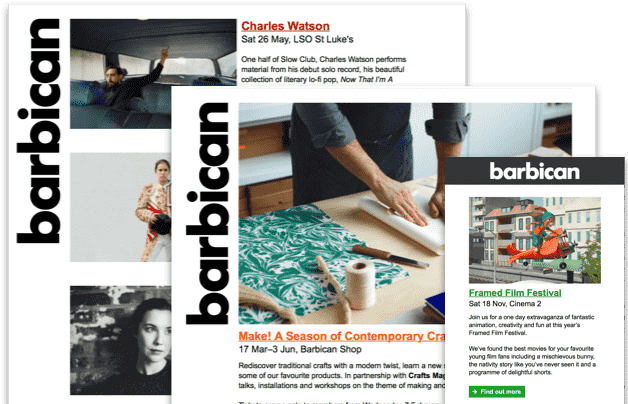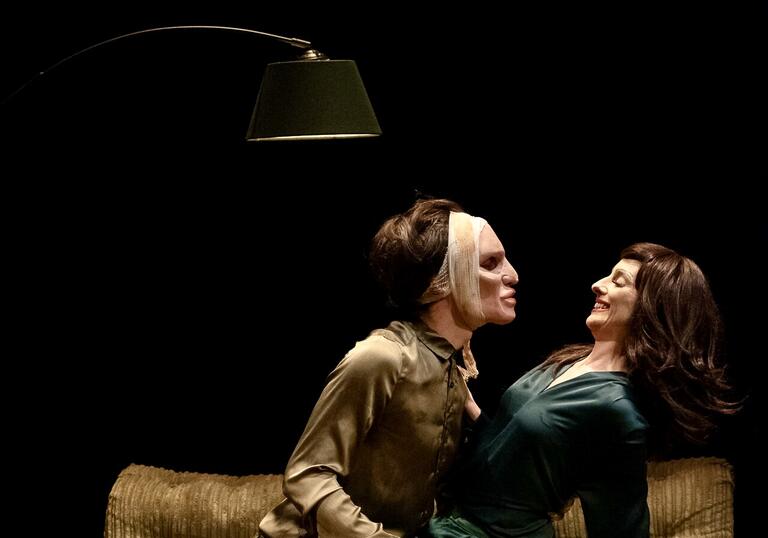
About the show
Flesh celebrates bodies, whether they are weak or strong, made-over and natural, alone or together. For better or for worse, we are cloaked in flesh, inseparable from it: flesh makes a human incarnate in the world.
From a wedding anniversary party to a hospital room, a virtual reality experience to a family reunion in a cafe, this visual and non-verbal piece is a contemporary fable that examines the deep meaning to our flesh. With humour, eccentricity and vigour, the performers movingly show us that there is only a short distance between our bruised and our living flesh.
Flesh met en jeu des corps faibles ou accomplis, transformés ou normés, solitaires ou réunis. Enraciné à son enveloppe charnelle pour le meilleur et pour le pire, l'être humain est indissociable de cette chair, incarnation de son être au monde. Pourtant, aujourd’hui, cet ancrage tend à disparaître.
D'une fête d'anniversaire de mariage à une chambre d'hôpital, d'une expérience de réalité virtuelle à une réunion de famille dans un café. Flesh est un spectacle visuel et non verbal, une fable contemporaine qui plonge le/la spectateur-rice dans l'épaisseur de nos chairs. Avec humour et étrangeté, la compagnie Still Life nous remue de façon vivifiante: de nos chairs meurtries à nos chairs en vie, il n'y a qu'un pas.
Sophie Linsmaux and Aurelio Mergola of Still Life
About Still Life
Aurelio Mergola and Sophie Linsmaux create playful, disruptive shows which mix humour and quirkiness.
Since 2011, they have been working on constructing a unique on-stage language. Two heads are better than one for the duo, and their fruitful creative collaboration has enabled them to take a more long-term approach.
Through their productions, they develop their own form of carefully written visual theatre. In their dialogue-free plays, they dissect a world in which everything is going very, very wrong. They set about distorting time, and revealing our bodies and emotions. Deprived of worlds, their theatre represents and interrogates a world in which humanity is in jeopardy as it tries to find meaning and purpose at all costs.
Since their very first project, they have wanted to surround themselves with a tight-knit group of partners (or partners in crime!) who help to sow the seeds of their theatre projects. They work closely together at every stage, from conception to completion.
Since July 2019, Still Life has been an associate artist at Théâtre Les Tanneurs, Brussels.
About The London International Mime Festival
London International Mime Festival (LIMF) promotes contemporary visual theatre. Its productions have been nominated for, and won, Olivier Awards, and in 2017 the festival was honoured with the Empty Space - Peter Brook Special Achievement Award for its work over four decades. Founded in 1977, LIMF is an Arts Council England National Portfolio Organisation.
'The brilliant annual festival of visual theatre, dance, circus and puppetry’ The Guardian
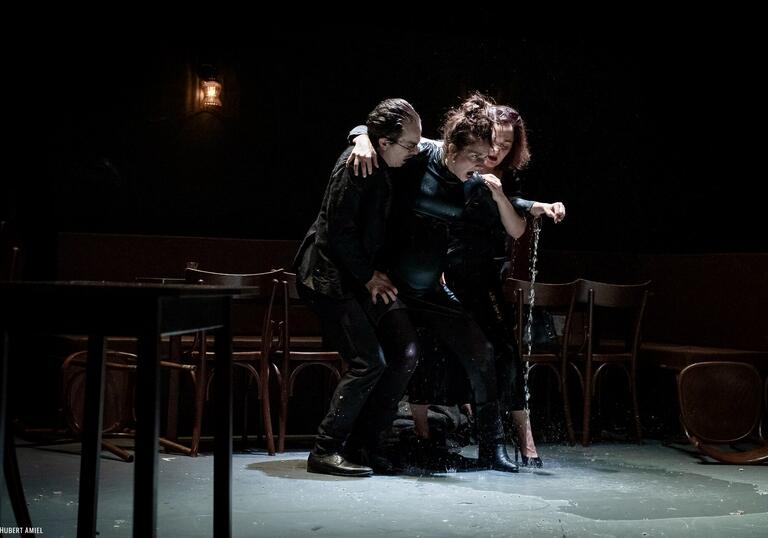
Cast and creative team
Performers
Muriel Legrand
Sophie Linsmaux
Aurelio Mergola
Jonas Wertz
Creative team
Concept and Direction Sophie Linsmaux and Aurelio Mergola
Writers Sophie Linsmaux, Aurelio Mergola and Thomas van Zuylen
Spatial Installation Sophie Leso
Set Design Aurélie Deloche, assisted by Rudi Bovy and Sophie Hazebrouck
Props Noémie Vanheste
Costumes Camille Collin
Lighting Guillaume Toussaint Fromentin
Light Technician Gwenaël Laroche
Sound Eric Ronsse
Voiceover Stéphane Pirard
Masks and Puppets Joachim Jannin
Set Design Trainee Farouk Abdoulaye
Seamstress Cinzia Derom
Technical Direction Nicolas Olivier
General Assistant Sophie Jallet
Stage Manager Charlotte Persoons
Administration and Production Marion Couturier
International Development and Distribution Aurora Nova and Wolfgang Hoffman
A Still Life production
Executive producer Théâtre Les Tanneurs (Brussels)
Co-produced by Centre culturel de Huy (Belgium); Kinneksbond Centre culturel Mamer (Luxembourg); La Coop asbl & Shelter Prod (Brussels)
With the support of the Ministry of the Wallonia-Brussels Federation Theatre Department, Théâtre national Wallonie-Bruxelles, taxshelter.be, ING tax-shelter of the Belgian Federal Government, Wallonia Brussels International
Created with the help of the Centre des Arts scéniques (Mons), Bloom Project (Brussels), Festival Liège, du Théâtre Le 140 (Brussels)
Presented by the Barbican in association with London International Mime Festival
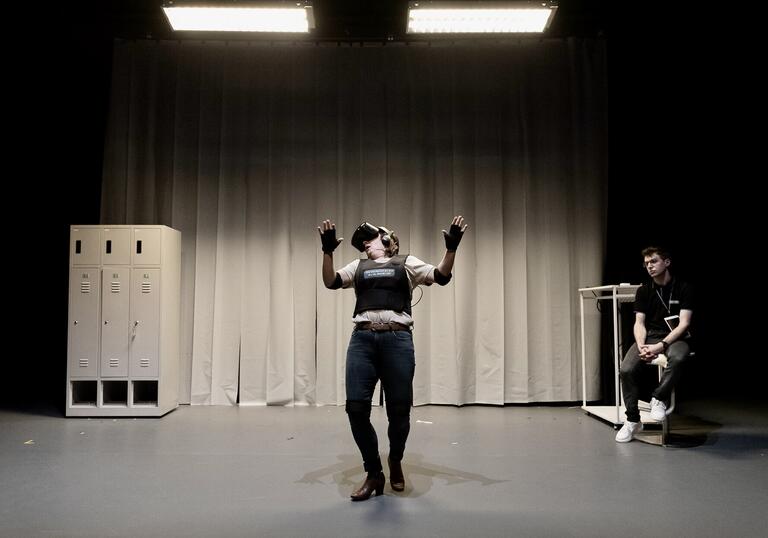
An interview with Sophie Linsmaux and Aurelio Mergola
Flesh immerses the audience into four intense life experiences. Do you enjoy exploring the human capacity for resilience when faced with the intensity of these situations – but without delving into the characters’ psychology?
Sophie Linsmaux and Aurelio Mergola: Flesh presents four independent stories. The locations and characters of each one lead us into a different world. The through line is the way the scenarios all deal with the relationship to flesh, and with interpersonal relationships.
The characters are never alone, but there is a powerful feeling of loneliness in the way each character experiences the events and is shaken by their emotions.
The audience are witness to intense situations right from the first story, which takes place in a hospital room. Each situation and set are as realistic as possible, before realism is pushed to its breaking point and dissolves into a more dreamlike atmosphere. Each story has a moment where it shifts from hyper-realism to a poetic or nightmarish vision, presented either as plausible and real or entirely imagined by the character’s subconscious.
The performance begins with a dying body, a lump of dying flesh in a hospital bed, flanked by a son and a nurse. To write that story we met healthcare professionals who work in palliative care. We wanted to be faithful to reality but also to pay homage to the features of their work, their every day gestures. In Flesh, we explore embrace and the array of gestures, from modesty to intimacy, that are used – from a comforting embrace to an utterly failed one. In the first story, And Yet, the first gesture we encounter is that of the nurse touching this dying body. On the stage there are living bodies and inanimate ones. This scene explores our cultural relationship to death and modern western societies’ often blatant inability to accompany the dying.
Can you tell us more about your writing process for this show?
We wrote this show using writing exercise constructs we’d discovered during the first lockdown period. After noting about 50 forms based on images, fictions, and situations which inspired us, we identified leitmotivs. This allowed us to build a narrative made up of four short stories. Flesh begins with a death and ends with the arrival of life. We create a cycle. We came up with a second story in the cycle, which takes place in the small apartment where Kathy and John live. They sit on the couch in their living room, about to open their wedding anniversary present: a facelift. Unfortunately, Kathy doesn’t like this idea. We dive into searching their obsessions and fears, until the unthinkable happens.
As creators, we like to question the sensation of the demiurgic power that men can have over their environment, their own bodies, their flesh. We explore this here through the aesthetics and codes of horror movies.
With Flesh, we leave a story and enter the next one very abruptly; this shift is accompanied by a soundtrack which enables the audience to approach the new narrative and to experience a rising intensity throughout the show. The third scene is called Love Room: this is a place where one can strap on a VR helmet to experience virtual reality alone. The flesh of the ‘other’ is physically absent, but the sensations are concrete and real. The audience become voyeurs of the experience Dora goes through. We don’t know what she sees, but we see the impact of those images and situations on her. She experiences sensations outside of her body or her flesh.
Flesh ends with a family reunion in a neighbourhood cafe. Embrace is the story of a broken family where no one speaks to anyone else anymore, but they have to come together again for a funeral. Their only means of communication is violence, their heightened physical aggressiveness triggered by an involuntary feature by one of the siblings which leads to a sort of unwanted contact. A spontaneous brawl is a substitute for their inability to hug and comfort each other.
The stage is built like a box that can quickly open and close to move from one tableau to the next. The sequence of scenes creates a dialogue and the audience are free to interpret the links between them.
Your theatre is non-verbal, but far from non-vocal or silent.
Indeed. The experiences we show have no need for words and debates, but they of course need breath. Breath is the source of life, of emotion, of communication. The soundscape of Flesh plays a large part in conveying meaning, in particular during those shifts from hyper-realism to fantasy.
It’s important in our creative process. We work layer by layer, step by step, starting with silence, or rather with the noises created by the bodies of the actors at work, and by the objects being manipulated. Beyond the soundtrack, which helps create a fantastical atmosphere, all the other noises in the play are diegetic and caused by the actions. To create a scene, we use a method based on physical practice where we write down and choreograph series of movements and gestures, and refine them over time. We share a number of tools with our actors that let us approach space and time in the same way. Every feature is meticulously described, from its duration to the direction the body has to face. Even before we can experience it on the stage, we start thinking about the relationship to rhythm – the intrinsic rhythm of each tableau and the rhythm of the play as whole. It’s an indispensable element of our writing process, it’s there as soon as we start writing, from beginning to end. Events, facts and gestures are concrete, the situations that arise are rather extreme. With this physical score, the protagonists experience emotions. And we enter into their reactions, into their flesh… That’s what we like. From skin to flesh, from the surface to the most intimate experiences, we’re trying to burst the bubble of distance.
This is abridged from an interview published by the Festival d’Avignon Festival, and is reproduced with thanks.
Discover
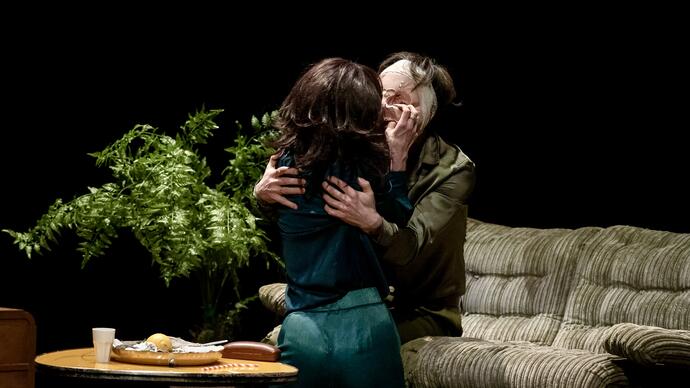
Read: The Word Made Flesh
‘We wanted to create a theatre without words that was meaningful'.
In this Total Theatre article, discover more about the creation of Flesh from Still Life's founders and co-directors Sophie Linsmaux and Aurelio Mergola.
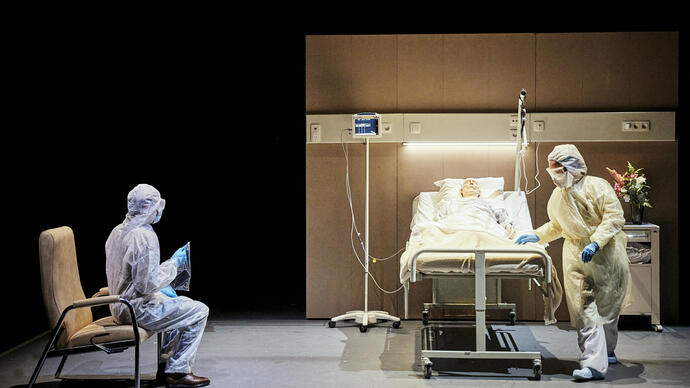
Watch: An introduction to Flesh
In this short video, Helen Lannaghan and Joseph Seelig, the directors of the London International Mime Festival, introduce Still Life's Flesh.
For the Barbican
Barbican Centre Board
Chair
Tom Sleigh
Deputy Chair
Sir William Anthony Bowater Russell
Deputy Chair
Tobi Ruth Adebekun
Board Members
Munsur Ali, Randall Anderson, Michael 'Mikey J' Asante, Farmida Bi, Tijs Broeke, Zulum Elumogo, Gerard Grech, Ann Holmes, Wendy Hyde, Charles Edward Lord, Wendy Mead, Graham Packham, Mark Page, Jens Riegelsberger, Jane Roscoe, Despina Tsatsas and Irem Yerdelen
Clerk to the Board
Ben Dunleavy
Barbican Centre Trust
Chair
Farmida Bi CBE
Vice Chair
Robert Glick OBE
Trustees
Tom Bloxham MBE, Stephanie Camu , Tony Chambers , Cas Donald, Tracey Harrison , Jeff Holland , David Kapur, Ann Kenrick, Kendall Langford, Alasdair Nisbet, Tom Sleigh and Sian Westerman
Directors
Chief Executive Officer
Claire Spencer
Artistic Director
Will Gompertz
Director of Operations and Buildings
Jonathon Poyner
Director of Development
Natasha Harris
Director of People, Inclusion and Culture
Ali Mirza
Senior Executive Assistant to Claire Spencer and Will Gompertz
Jo Daly
Theatre Department
Head of Theatre and Dance
Toni Racklin
Senior Production Manager
Simon Bourne
Producers
Leanne Cosby, Jill Shelley, Fiona Stewart
Assistant Producers
Anna Dominian, Saxon Mudge, Mali Siloko
Production Managers
Jamie Maisey, Lee Tasker
Technical Managers
Steve Daly, Jane Dickerson, Nik Kennedy, Martin Morgan, Stevie Porter
Stage Managers
Lucinda Hamlin, Charlotte Oliver
Technical Supervisors
James Breedon, John Gilroy, Jamie Massey, Adam Parrott, Tom Salmon, Lawrence Sills, Chris Wilby
PA to Head of Theatre
David Green
Production Administrator
Caroline Hall
Production Assistant
Andrew Pellett
Technicians
Eleanor Foster, Kendell Foster, Burcham Johnson, Christian Lyons, Charlie Mann, Josh Massey, Matt Nelson
Stage Door
Julian Fox, aLbi Gravener
Creative Learning
Senior Producer
Lauren Monaghan-Pisano
Creative Learning Producer
Lauren Brown
Creative Learning Assistant Producer
Rikky Onefeli
Marketing Department
Acting Head of Marketing
Ben Jefferies
Marketing Manager (Theatre and Dance)
Kyle Bradshaw
Marketing Assistant (Theatre and Dance)
Rebecca Moore
Communications Department
Head of Communications
James Tringham
Communications Manager (Theatre and Dance)
HBL
Communications Assistant (Theatre, Dance and Cinema)
Sumayyah Sheikh
Audience Experience
Deputy Head of Audience Experience & Operations
Sheree Miller
Ticket Sales Managers
Lucy Allen, Oliver Robinson, Ben Skinner, Jane Thomas
Operations Managers
Seán Carter, Richard Long, Rob Norris, Elizabeth Davies-Sadd, Samantha Teatheredge
Operations Manager (Health & Safety)
Mo Reideman
Audience Event & Planning Manager
Freda Pouflis
Venue Managers
Scott Davies, Tilly Devine, Gary Hunt, Nicola Lake, Tabitha Goble
Assistant Venue Managers
Suman Cheema, Giovana Lorensatto, Maria Pateli, Joanna Quilty, Cherry Xi, Daniel Young
Crew Management
Dave Magwood, Rob Magwood, James Towell
Access and Licensing Manager
Rebecca Oliver
Security Operations Manager
James Cocklin
Registered charity no. 294282
